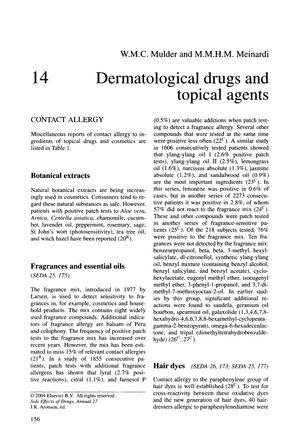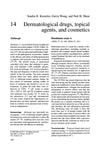Dermatological Drugs and Topical Agents
January 2004
in “
Side effects of drugs annual
”

TLDR Certain skin drugs and topical agents, including some natural extracts and fragrances, can cause allergic reactions. Some hair dyes and extensions, as well as minoxidil, a hair growth treatment, can also cause allergies. Botulinum toxin A can effectively reduce sweat but may have temporary side effects.
In 2003, various dermatological drugs and topical agents were studied for their potential to cause allergic reactions. Natural botanical extracts used in cosmetics were found to cause positive patch tests in some patients. A study of 1855 patients identified certain fragrance allergens as valuable for testing fragrance allergies. Another study of 1606 patients found ylang-ylang oil, lemongrass oil, and jasmine absolute to cause positive patch tests. Hair dyes, particularly the paraphenylene group, were established as allergens, but newer dyes did not cause reactions in a study of 40 hairdressers. A 10-year analysis of 73,818 patients showed cases of contact allergy to formaldehyde and MCI/MI, preservatives in cosmetics. Hair bonds and extensions were found to cause severe type I reactions in some patients. Minoxidil, used for hair growth, was found to cause allergic reactions in some patients. A 57-year-old man developed pigmented contact dermatitis after using minoxidil 5% for 2 years, and a 24-year-old woman became sensitized to minoxidil and saw palmetto, a hair loss treatment. A fetus had severe malformations due to maternal minoxidil exposure. Botulinum toxin A was found to be effective in reducing sweat production in patients with axillary hyperhidrosis in a trial involving 145 patients, but some experienced temporary adverse events. Other studies examined the phototoxicity and photosensitization potential of various substances, the risk for hyperlipidemia and metabolic syndrome after hypertriglyceridemia during 13-cis retinoic acid therapy for acne, and the safety and effectiveness of botulinum toxin type A for axillary hyperhidrosis over 16 months.




